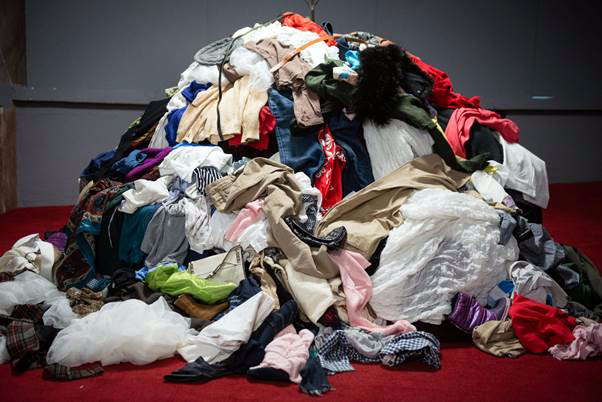New Report Highlights Europe’s Textile Waste

Europe’s export volume of used textiles, including clothing and footwear, tripled in two decades, a new report has found.
The report from the European Environment Agency also found that bio-based fibers such as rayon and viscose, touted as eco-friendly, have significant environmental impacts.
More from WWD
In 2000, the 27-country bloc exported slightly more than 550,000 tons, which increased to 1.7 million tons in 2019. That amounts to 8.4 pounds of waste per person a year. Since roughly 15 pounds of textiles are consumed per person in the European Union each year, that means that over half goes to waste exports.
Much of that is exported to Asia and Africa, where it can often end up in landfill. The report highlights that although consumers donate their used clothing with good intentions thinking it’s reused by those in need, it’s often not the case. “Common public perceptions that used clothing donations are always of use in those regions do not reflect the reality,” the report said.
Africa absorbs the majority of Europe’s waste, taking in 46 percent of the exports. Some of that is resold on the secondhand market, but much also ends up in waste streams. Asia takes 41 percent of the EU’s used textiles, which is more of a mixed bag — textiles here can be downcyled into industrial filling and reused, though some ends up being reexported to Africa or also end up as trash.
“The exports are a mix of textiles that can, in principle, be reused in the receiving countries. However, in reality, they may be landfilled: textiles that cannot be reused typically end up being downcycled or disposed of in landfills or dumps,” the report noted.
The report said there’s often confusion around codes meant to note the condition and fiber composition of textiles, making it hard to track what happens to the waste once it hits the other countries.
“There is little research or information on the actual reuse rate in the receiving countries, the share of used textiles that ends up as waste, and the specific waste management systems and their abilities to handle the used textiles that cannot be reused in a sustainable way,” it said.
Ghana is the sixth-largest importer of clothing with a thriving secondhand market. However, with the rise of cheap, ultra-fast fashion “the clothes arrive damaged beyond repair or are of such poor quality that customers have little interest in them.” The textile waste in turn ends up in landfills, is burned or discarded in rivers or the ocean causing “significant air, soil and water pollution,” the report said.
In Asia, the biggest importer is Pakistan, which downcycles about half into industrial rags and reexports the other half to other developing countries, again to Africa. As textiles are cheaper than gas or coal, the textile waste there is often incinerated as fuel for other industries.
The sheer numbers of how much is exported is a wake-up call for the EU countries, which will be required to collect and sort textiles separately from other waste by 2025. In addition, the EU is also rolling out new rules that will limit the export of these used textiles to developing countries, with a ban on all waste destined for disposal expected to be finalized later this year.
The EEA’s report highlighted that Europe doesn’t have the capability or capacity to recycle most of its used garments and footwear. As the export channels to the global south close, “Europe faces a challenge in how to handle its own used textiles,” the report concluded.
In 2019, Kenya, Uganda, Tanzania, Rwanda and Burundi planned to phase out the import of the secondhand textiles from industrialized nations, but only Rwanda has implemented the plan following economic threats from the U.S.
The report also noted that bio-based fibers such as rayon or viscose, which are sourced from trees and often held up by the fashion industry as more environmentally friendly alternatives, have their own structural problems. While these keep oil-based and plastic textiles such as polyester out of the supply chains, they cause other environmental pressures “including water and land use related to agricultural activities, deforestation and fiber processing,” the report said. “Their bio-based origin does not free them from environmental concerns related to microfibers, waste and recyclability.”
Best of WWD
